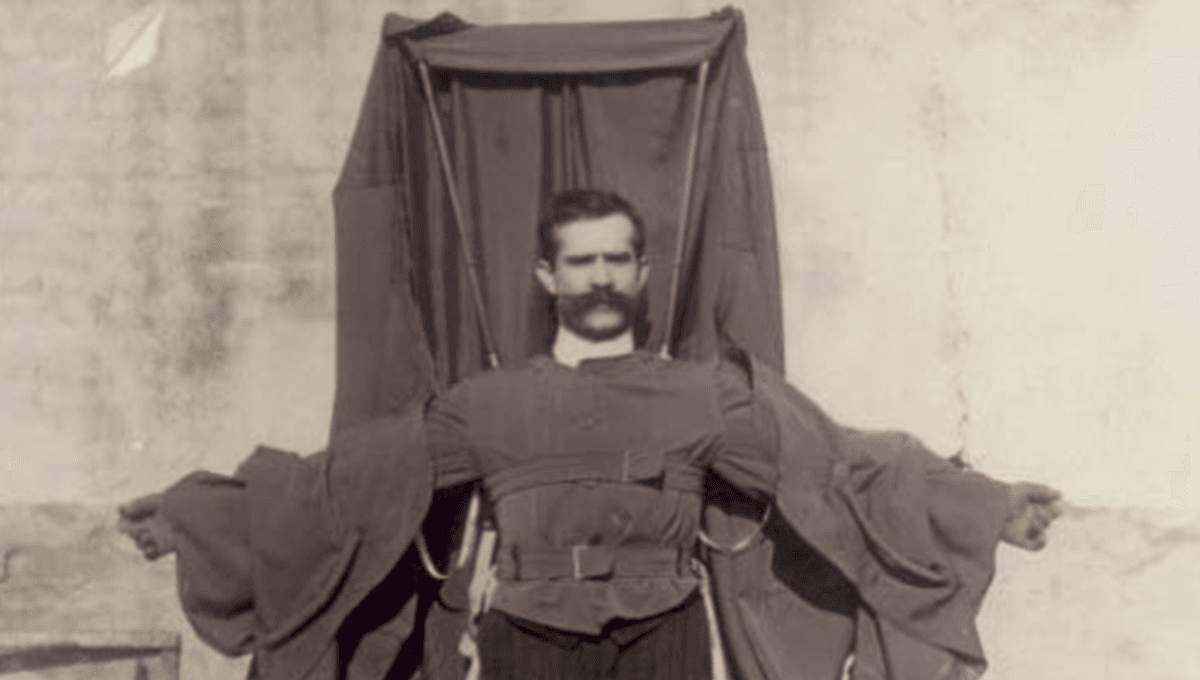Franz Reichelt And The Eiffel Tower Wingsuit Incident Of 1912

Franz Reichelt And The Eiffel Tower Wingsuit Incident Of 1912
Here's something to reassure anyone thinking of getting into extreme sports: Every activity and dangerous sport, apart from something we're looking at introducing known as white water zorbing, has been tried at least once before by some daredevil.
For example, the first parachute jump was performed on October 22, 1797, when André-Jacques Garnerin, from France, jumped out of a hot air balloon aided by a silk chute of his own design, surviving the rough landing. Or the first person to jump from a low-altitude platform using a parachute suit, although if you're looking for reassurance before partaking in your own extreme sports, the tale of Franz Reichelt may not be the best example. Reichelt was a tailor and inventor, and sometimes those two things don't mix so well. Born in 1878, he had been inspired by Garnerin's feat as a parachute jumper, but wanted to create a wearable version of the parachute that would be light enough for a pilot to wear, should they ever have to leap out of the safety of their planes. He worked hard on his designs, and by 1912 had a foldable wing suit made of silk, which he believed would be able to open up and deliver a safe landing even when someone launched themselves from an altitude much lower than a plane. “My new invention is like nothing else,” Reichelt told Le Petit Journal, per All That's Interesting. “It’s constructed, basically, half in waterproof fabric and half in silk…thanks to a system of rods and belts that one can control, the ‘parachute’ deploys during a fall and will save [a pilot’s] life.” The only problem was; it didn't really work so well. Reichelt began testing his new suit by placing dummies inside of it, and then launching them off platforms around 10 meters (32 feet) high. Test after test, the dummies would invariably smash into the ground. But the Austrian-born man had a hunch that there was a small problem, in that he wasn't launching the dummies from a high-enough platform. He believed that if he could launch them from higher up, the test pilots would gain enough speed to open up the parachute and slow their fall. Fortunately/unfortunately if you can see where this story is headed (in the downwards direction), the Eiffel Tower in Paris, France, was available for booking. On Sunday, February 4, 1912, Reichelt booked time at the Eiffel Tower to test his invention. His plan was, the authorities believed, for him to throw another dummy off the first deck of the tower from the height of around 57 meters (187 feet). Reichelt, who had already broken his leg during earlier testing of his suits, invited journalists, camera operators, and friends to witness the event. It soon became clear to all involved, as well as security at the tower, that he intended not to use a dummy. Clues pointing in this direction include that he arrived with no dummies in tow, whilst wearing the enormous wingsuit. Friends and a security guard attempted to convince Reichelt not to jump, but were quickly shot down. "I want to try the experiment myself and without trickery," he told them, "as I intend to prove the worth of my invention." As a crowd gathered, friends raised technical objections to the suit, and tried to convince him that the platform was not high enough for the parachute to fully open. These were met with the statement "you are going to see how my seventy-two kilos and my parachute will give your arguments the most decisive of denials", which is probably one of the last things you want to say before leaping to your death. At 8:22 am, witnessed by a crowd gathered below, as well as journalists and cinematographers he had invited, the 33-year-old stood on a stool placed upon a table, and checked the wind direction by scattering a torn-up newspaper. Then, after telling his friends "à bientôt" or "see you soon" and hesitating for around 40 seconds, he jumped off the platform to his death. Franz Reichelt, before his ill-fated jump. Reichelt plummeted to the ground in seconds, crushing his right arm and leg, breaking his skull and spine, and dying instantly. In the time that he had imagined everyone would be congratulating him on his successful parachute jump, and maybe putting in a few orders for pilots, instead, police rushed to his side, before removing his body and measuring the hole he had left on the ground upon impact. The hole was around 15 centimeters (6 inches), which, while impressive, wasn't really what he was going for.


